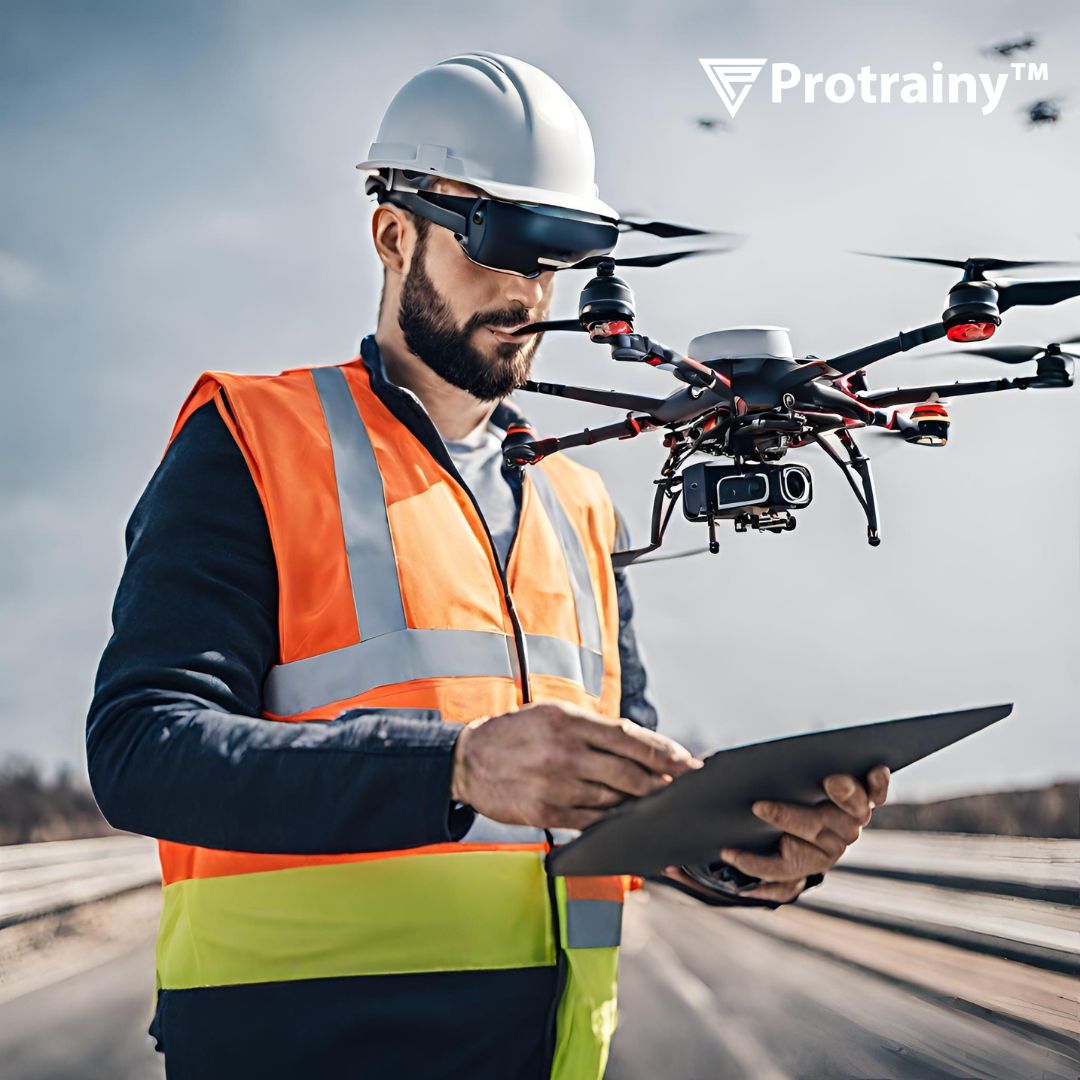Blogs
- Home
- Blogs
The Role of Drones in Civil Engineering: Revolutionizing Design, Inspection, and Construction
Protrainy | Aug. 30, 2023, 1:43 p.m.

Introduction:
In the ever-changing field of civil engineering, advancements in technology are revolutionizing the way projects are conceived, executed, and managed. Drones have emerged as a powerful tool that is transforming every stage of civil engineering projects. With their aerial capabilities, precision, and data-gathering capabilities, drones are reshaping design, surveying, inspection, and construction. This blog explores how drones are changing the world of civil engineering, their versatile applications, and the numerous benefits they bring to the field.
Unveiling the Aerial Advantage: A New Perspective on Engineering
Drones, also known as unmanned aerial vehicles (UAVs), have become essential assets for modern civil engineers. They can capture high-resolution imagery, generate accurate topographical data, and conduct real-time site monitoring from above, expanding the possibilities in the field.
1. Precision Surveying and Mapping:-
Drones have revolutionized surveying and mapping by quickly and accurately collecting data over large areas. Equipped with advanced GPS and LiDAR technology, drones can create detailed topographic maps, digital terrain models, and orthomosaics with unparalleled accuracy. This expedites the design phase and improves understanding of site conditions.
2. Site Inspection and Safety Monitoring:-
Drones enable engineers to remotely inspect hard-to-reach or hazardous areas, reducing time and safety risks. With high-definition cameras and thermal imaging capabilities, drones can identify structural issues, monitor construction progress, and assess safety compliance, minimizing human exposure to dangerous conditions.
3. Construction Progress Tracking:-
Drones provide real-time visual documentation of construction activities through regular flyovers and imagery. This allows project managers to make better decisions, identify potential bottlenecks, and address issues promptly to keep projects on track.
4. Design Visualization and Communication:-
Drones aid effective communication between stakeholders by providing dynamic visualizations of design concepts. This helps clients and teams better understand the project's scope and implications, leading to more informed decision-making, reduced misunderstandings, and improved collaboration.
5. Environmental Impact Assessment:-
Drones play a vital role in conducting environmental impact assessments by capturing aerial images and data. Civil engineers can analyze vegetation cover, soil erosion, water bodies, and other environmental factors to design projects that minimize ecological disturbances and adhere to sustainable practices.
6. Disaster Response and Recovery:-
In times of natural disasters, drones can quickly survey affected areas, assess damage, and identify potential risks. This information assists in directing rescue efforts, planning recovery strategies, and ensuring the safety of responders and affected populations.
7. Cost and Time Efficiency-
Drones enhance data quality and contribute to cost and time savings. Faster data acquisition and reduced need for manual surveys shorten project timelines. Additionally, the accuracy of drone-generated data minimizes errors, reducing the risk of costly rework during construction.
Challenges and Considerations:
While drones offer numerous benefits to civil engineering, their integration comes with challenges. Engineers must navigate regulatory considerations, airspace restrictions, weather conditions, and data privacy concerns. They need to be well-versed in drone regulations, secure necessary permits, and prioritize safety in their operations.
Conclusion: A New Horizon for Civil Engineering
Drones have transformed from futuristic gadgets into indispensable tools that are reshaping the landscape of civil engineering. From surveying vast terrains to monitoring construction progress and enhancing safety, drones are elevating the industry's capabilities. As technology continues to advance, drones will likely become even more integrated into civil engineering, fostering greater innovation, efficiency, and sustainable development. Civil engineers are not just reshaping projects; they are shaping the future of their profession.
